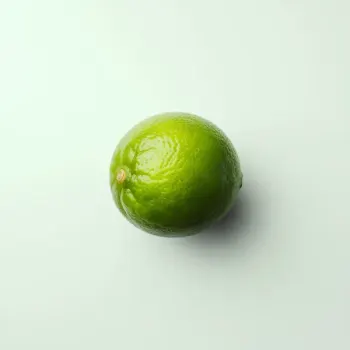Tamarind paste and lime juice are both souring agents used in cooking, with tamarind offering a sweet-and-sour flavor and thick consistency, while lime juice provides a sharp, tangy taste and a thin texture. They're used differently in various dishes to enhance flavors and add complexity or brightness.

Tamarind paste is a concentrated form of tamarind, a fruit that grows in pods and has a sour-sweet flavor profile. It's commonly used in Asian, African, and Latin American cuisines to impart a tangy depth to dishes.

Lime juice is the tart, fresh-squeezed liquid from limes. It's a staple in various cuisines around the world, known for its ability to brighten flavors and add a zesty kick to any dish.
Tamarind paste and lime juice differ in flavor, texture, and culinary uses. Tamarind paste offers a complex sweet-and-sour taste and a thicker consistency, while lime juice provides a straightforward sourness and a thin, watery texture. Tamarind comes from the tamarind tree's fruit, whereas lime juice is squeezed from citrus fruit.

Your ultimate Recipe Box, Meal Planner, and Cooking Class all in one
In sauces and marinades, tamarind paste contributes a rich, tangy flavor perfect for glazing or as a base in barbecue sauces. It pairs well with ingredients like soy sauce and ginger, creating complex layers in Asian-inspired dishes. Lime juice is ideal for fresh, zesty marinades and can be used in ceviche or to add a final splash of brightness to salsas and guacamole. Its high acidity makes it perfect for tenderizing meats in quick marinades.
Tamarind paste is often used in lentil soups, tamarind soup base dishes, and certain curry stews, offering a sour note that's balanced with the other savory elements of the dish. Lime juice is a common finishing touch in soups like Thai Tom Yum, adding a fresh burst of acidity that lifts the soup's flavors. It's also a key ingredient in Mexican pozole.
Tamarind paste can be used to create tamarind juice or to add complexity to cocktails and mocktails, often balanced with sweeteners. Lime juice is essential in many cocktails like margaritas and mojitos, as well as in non-alcoholic drinks like limeade, providing a sharp, refreshing taste.
Tamarind paste is rich in certain minerals and has a higher sugar content, while lime juice is lower in calories and contains vitamin C.
| Nutrient | Lime Juice ( per Tablespoon ) | Tamarind Paste ( per Tablespoon ) |
|---|---|---|
| Fat | 0g | 0g |
| Calcium | 4mg | 10mg |
| Protein | 0g | 0g |
| Calories | 4 | 15 |
| Vitamin C | 2.8mg | 0.1mg |
| Carbohydrates | 1g | 4g |
Lime juice can be used as a substitute for the sourness of tamarind paste but will not replicate the unique sweet-and-sour profile or consistency that tamarind paste offers.
Tamarind paste has a more complex, intense sweet-and-sour flavor compared to the straightforward sourness of lime juice.
If tamarind paste is unavailable, you can use a mixture of lime juice with a bit of brown sugar as a substitute to mimic the sweet-and-sour profile.
Yes, tamarind paste can be used in desserts, providing a unique tangy flavor that pairs well with sweet ingredients.
Lime juice is lower in calories and contains vitamin C, making it a healthier option if you're looking to reduce sugar intake.